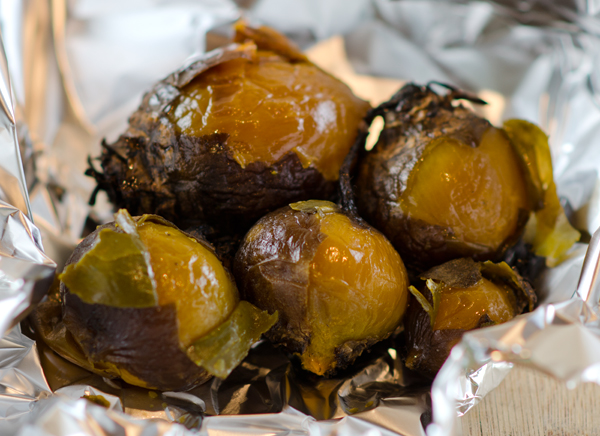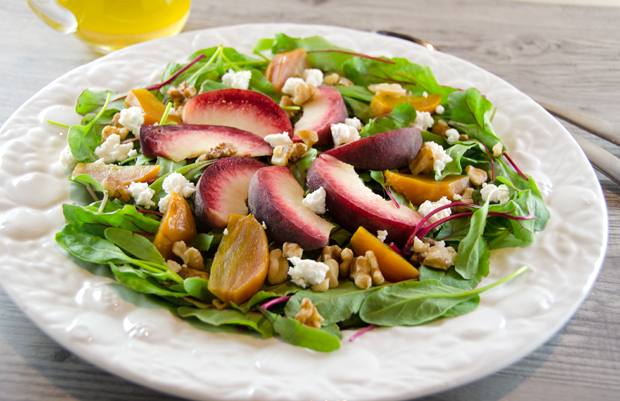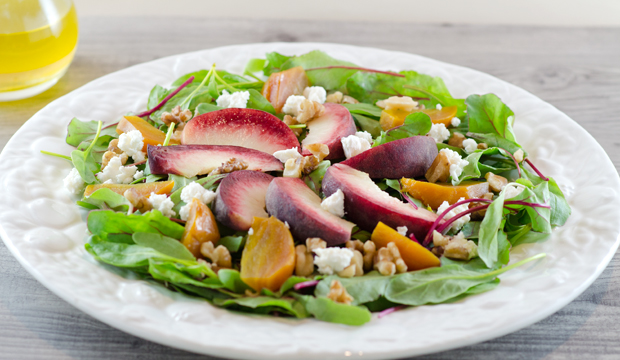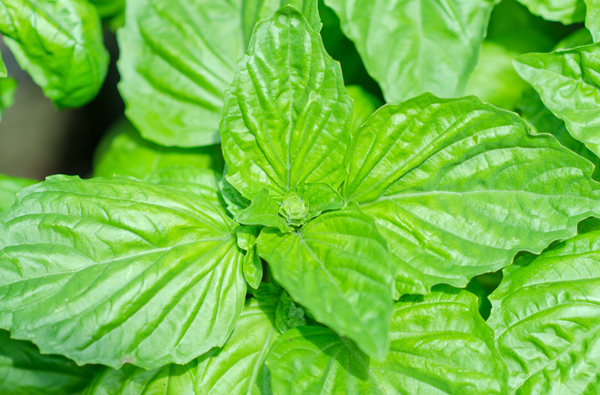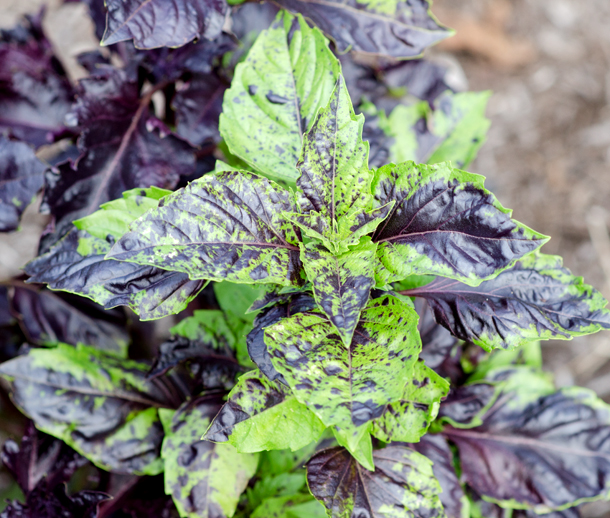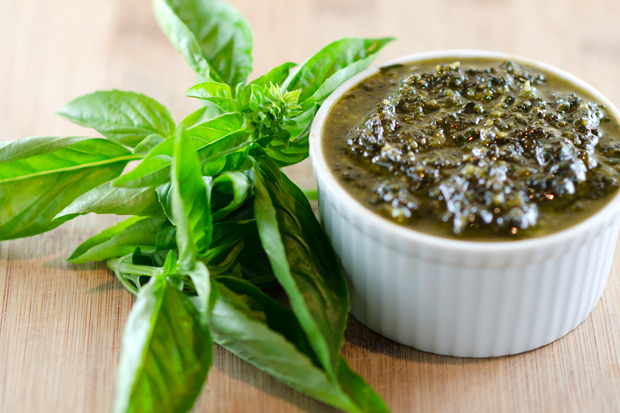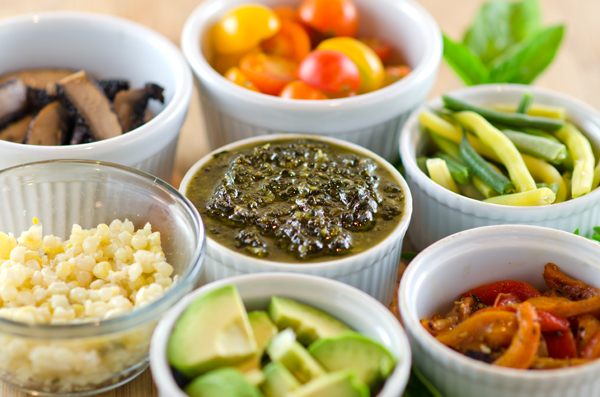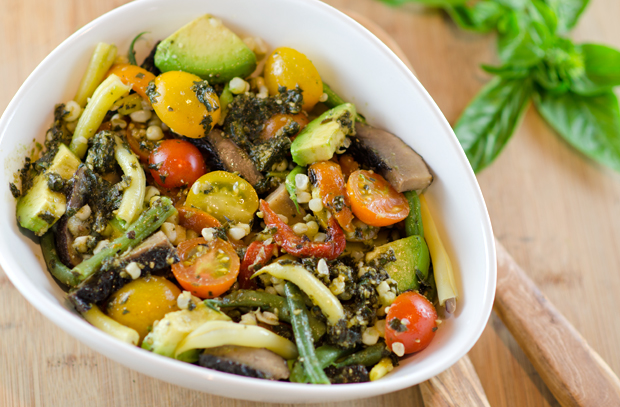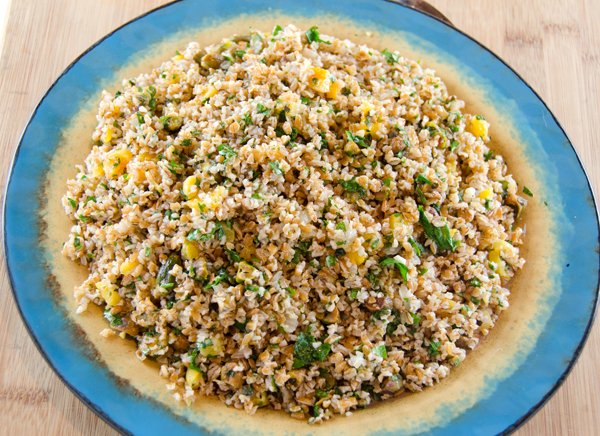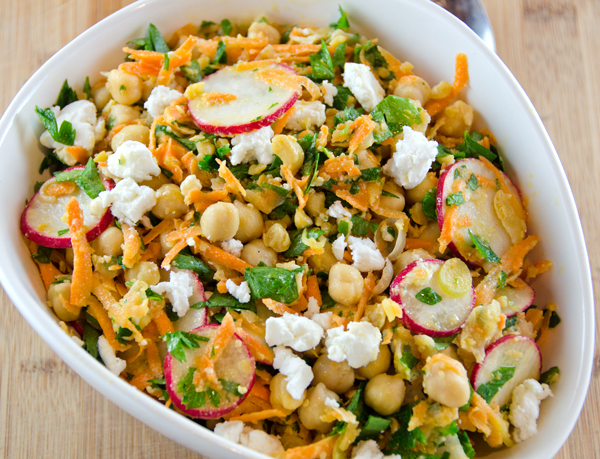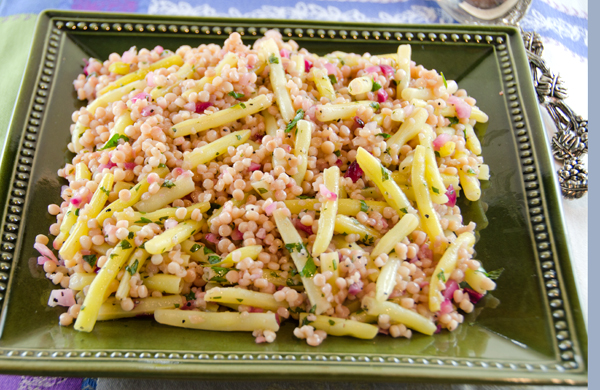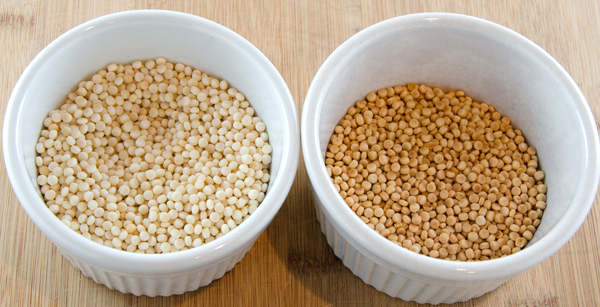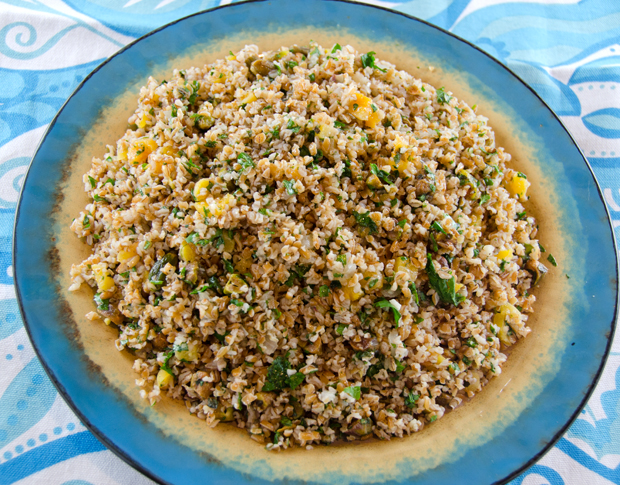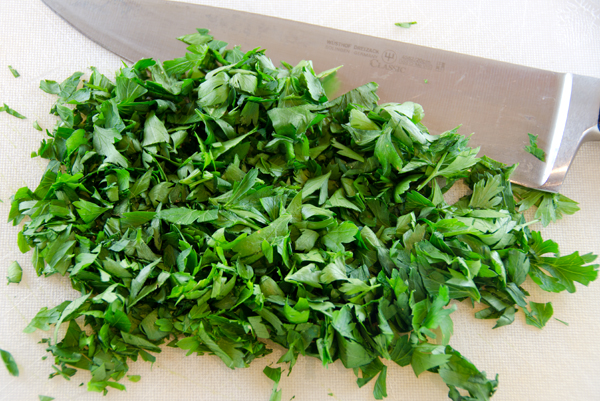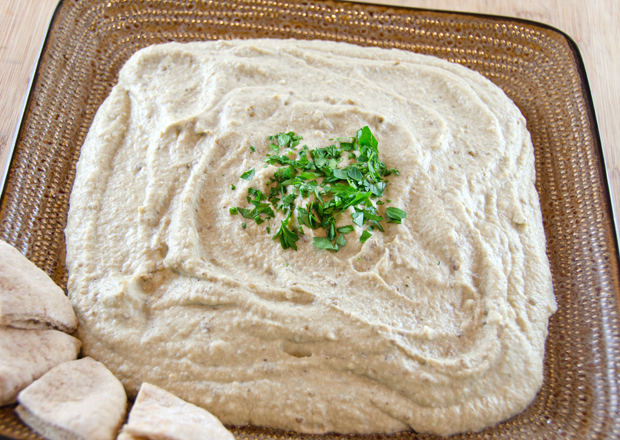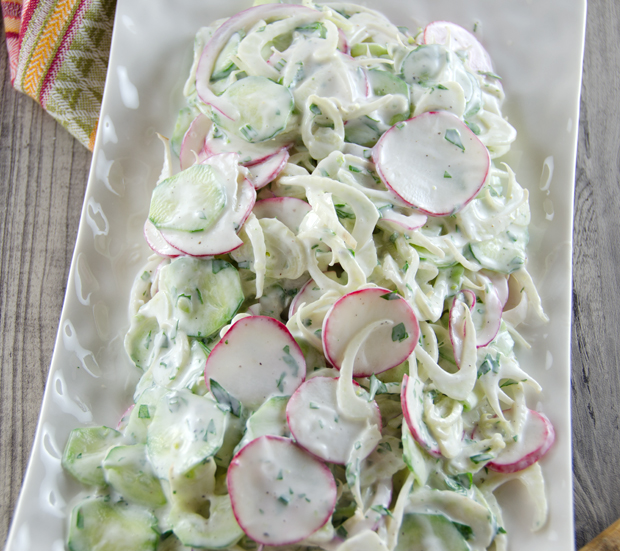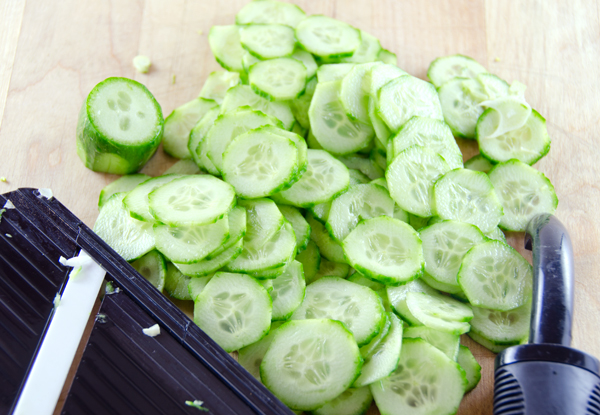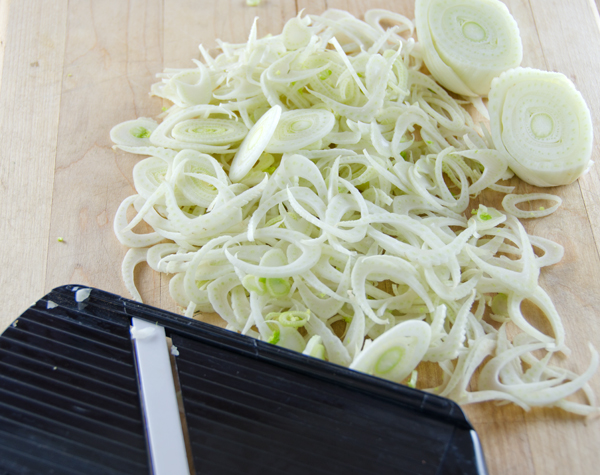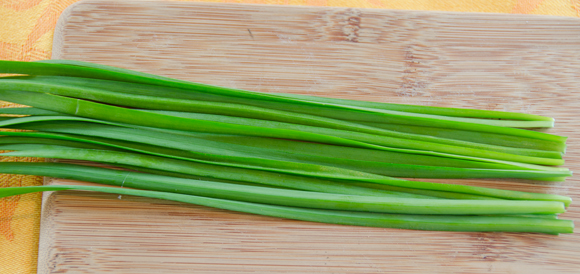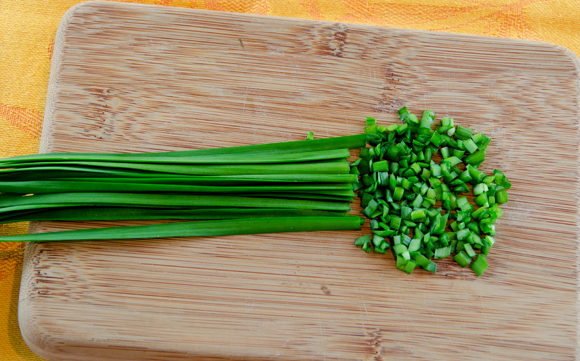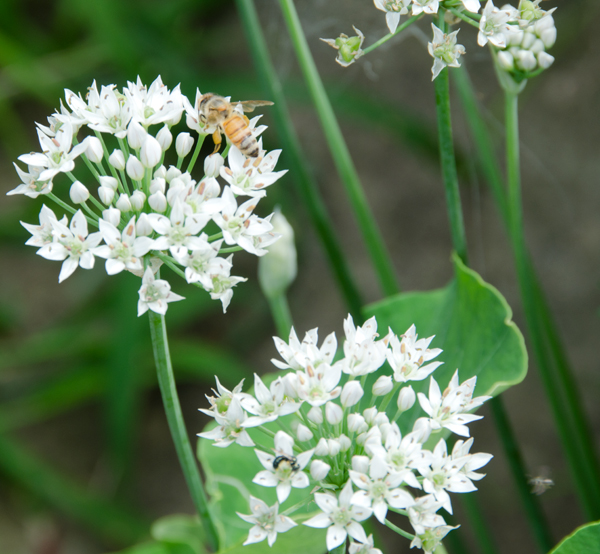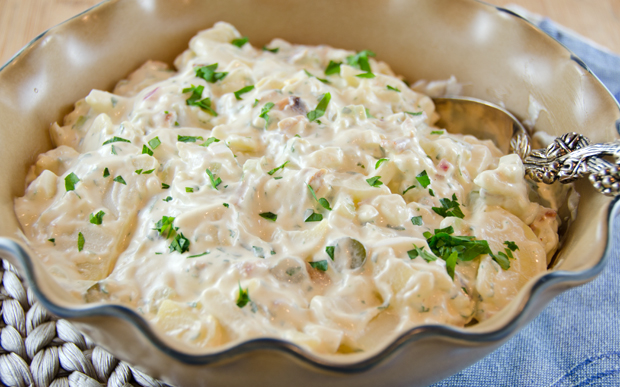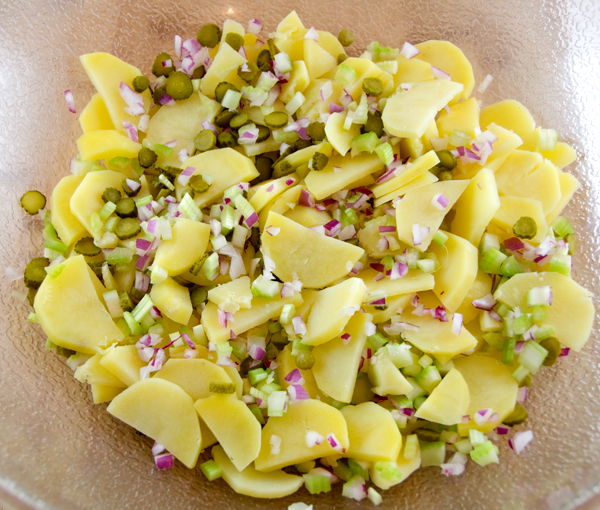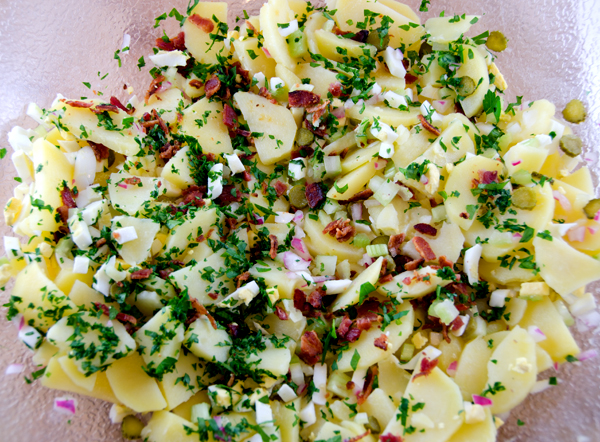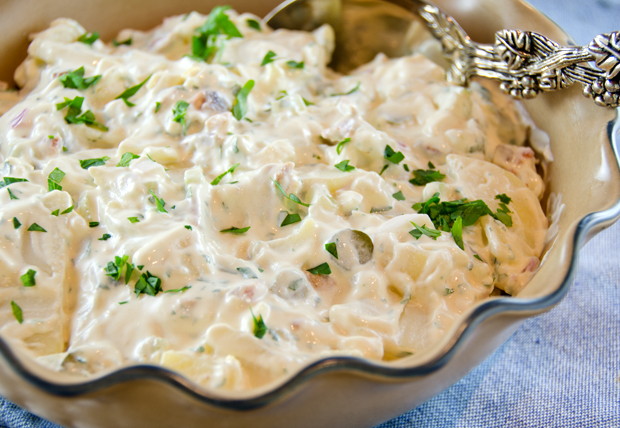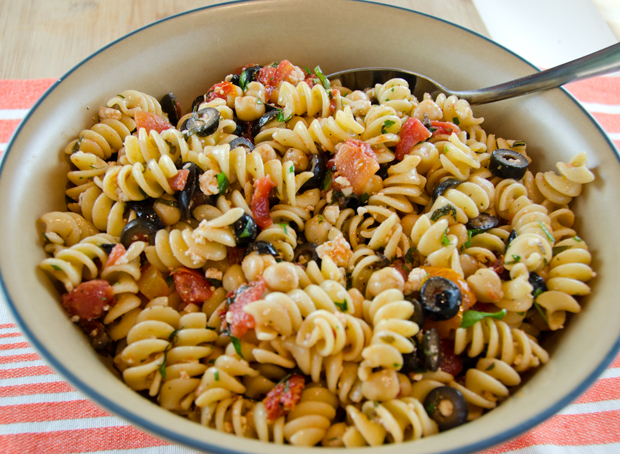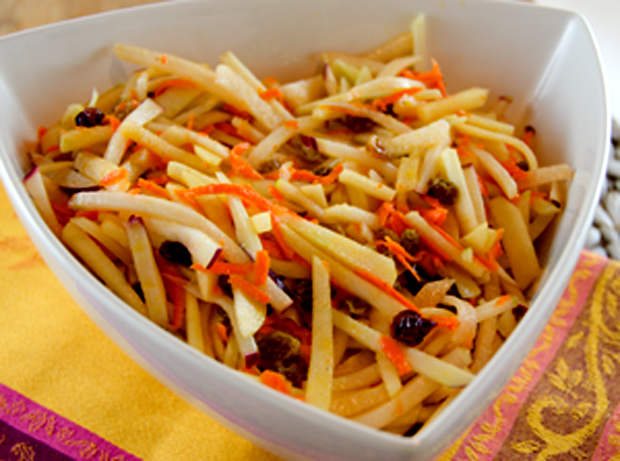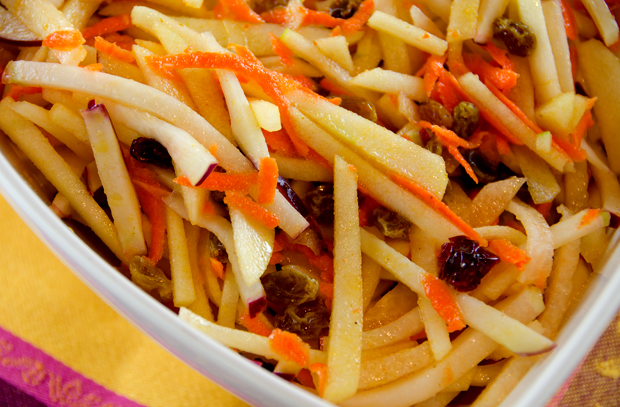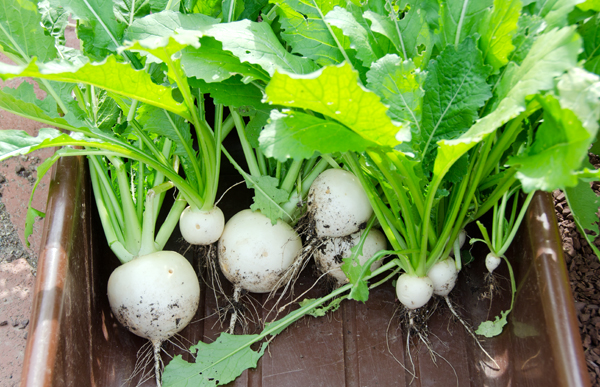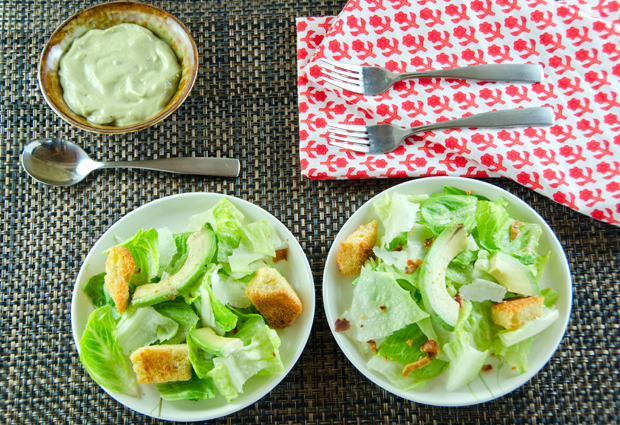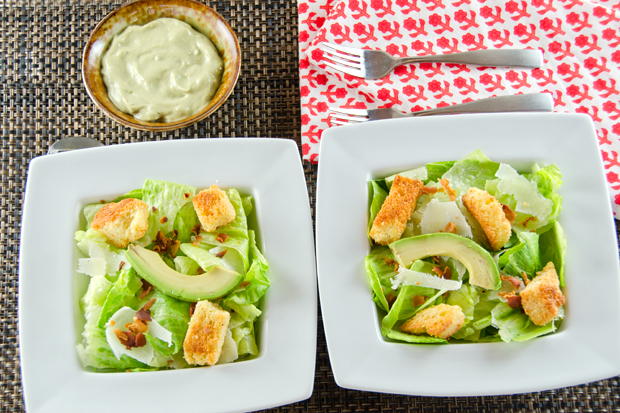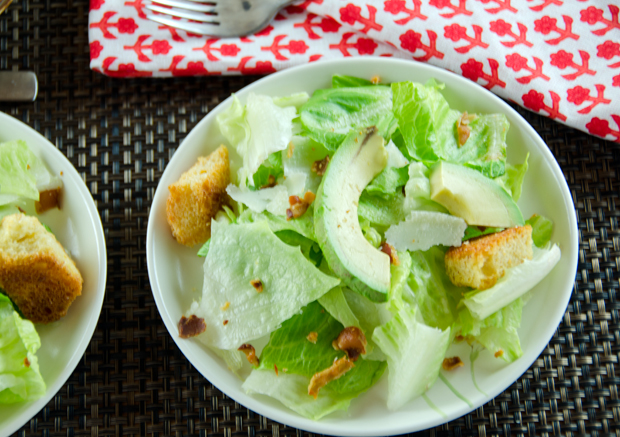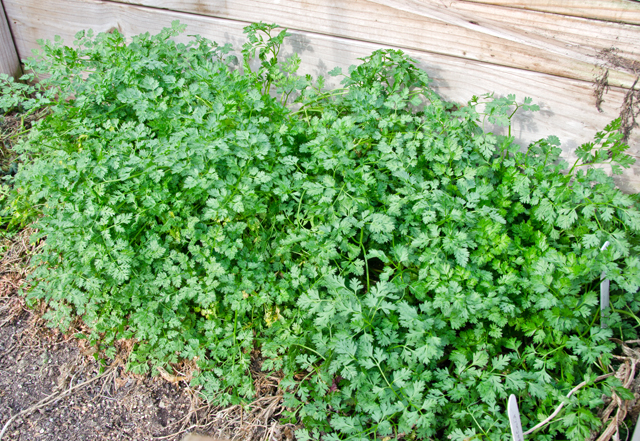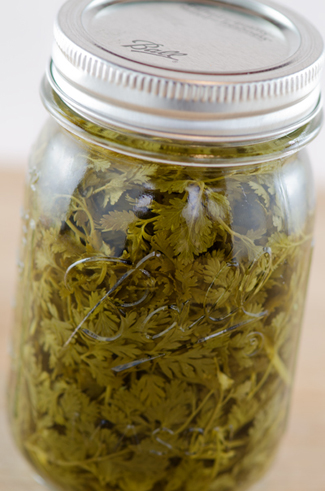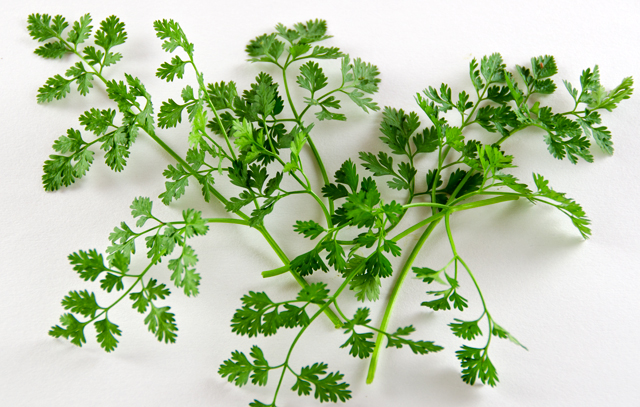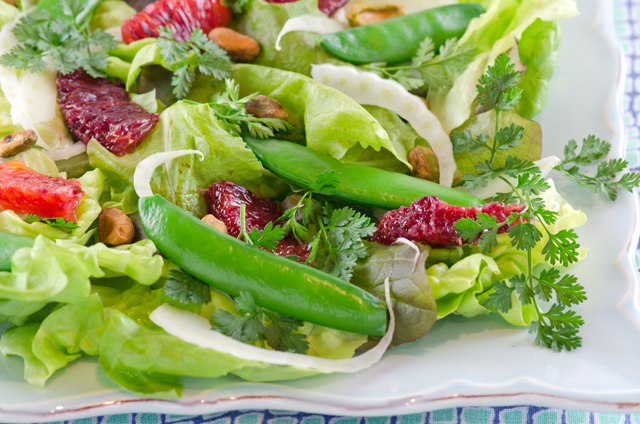This salad celebrates the beginning of one beet crop, the harvest of another and beautiful local peaches from the farmers market.
In the last several years we have discovered the advantages of succession planting. Succession planting means that with some shorter season crops, like salad greens, beets and carrots, we plant fewer rows at one time but we do multiple plantings throughout the growing season for a continuous harvest. Our most recent planting of beets is the fifth of the season, this works well for us since we are only feeding ourselves, friends and family with the vegetables we grow.
Beet “seeds” are actually a dried fruit or a seed cluster that is made up of 2-6 seeds. So if you only planted one beet seed, you would still get several plants. The first thinning can occur when the seedlings are about 2 inches in height leaving the healthiest plants to mature. Snip the greens with scissors at soil level so as not to disturb the remaining plants. This will allow the remaining plants to gain more water, sunlight and nutrients from the soil. If you don’t thin, you will get all tops (unless that’s what you wanted) and there will not be enough space for the roots to develop into healthy round beets. We do a second thinning when the greens are a little bit larger. Some of those greens can still be used in salads, the larger greens are best sautéed with a little garlic, olive oil, salt and pepper. Beets are in the same family as spinach and chard and the greens share a similar mild flavor.
So what is the difference between red and yellow beets? Beats me! Now could I resist that one? Other than the fact that they don’t “bleed” like red beets, the only other difference is their flavor is a bit milder than the red varieties.
Roasting beets in foil brings out their sweet, earthy flavor and is the easiest and neatest way to cook them. If you are roasting both red and golden beets wrap them separately so the colors won’t bleed together. Scrub your beets well, no need to peel at this point, cut or snap off the top and trim the root end. Place them on a sheet of heavy foil, top with a splash of olive oil, salt and pepper and maybe a sprig of thyme. My beets are rarely uniform in size, so I start checking them in 45 minutes. Beets that are easily pierced with a tip of a knife are ready. Once the beets are sufficiently cooled, the skins slip off easily.
Both yellow and white fleshed peaches are in season now at our local farmers market. The standard yellow peach we are all familiar with has deep yellow skin with a vibrant red or pink blush and yellow flesh. White fleshed peaches have grown in popularity since the 1980’s when heartier varieties were developed that could be shipped to markets. The skin of the white peach is pale and pink with pale flesh and in the case of these peaches, tinged with vibrant red. White peaches are sweeter than their tarter yellow counterparts and are best enjoyed fresh, not cooked.
In this salad I combined the last of current beet harvest with the delicate baby greens of our most current planting along with sweet white peaches, creamy goat cheese and some toasted walnuts. The peach flavor was even more enhanced with a vinaigrette made with a peach balsamic vinegar from The Tubby Olive. A white wine vinegar combined with a touch of sweetness from honey or agave sweetener could substitute.
Roasted Beet, Beet Green and Peach Salad
Ingredients
- 3 small beets, roasted and cut into wedges
- Olive oil, kosher salt and freshly ground pepper
- 2 peaches, pitted and sliced
- 6 ounces mixed greens- I used beet thinnings, any combination of baby greens will do
- 1/4c peach or white wine vinegar
- 3/4c extra virgin olive oil
- 1 t Dijon mustard
- 1 t honey or agave sweetener, if using white wine vinegar
- 1/3 to ½ cup blue or goat cheese, crumbled
- ¼ cup walnuts, toasted and chopped
Directions
- Preheat oven to 425° degrees F.
- Wash and scrub the beets well.
- Place beets on a large piece of aluminum foil, season with a splash of olive oil and a little salt and pepper then fold the foil into a packet. Place the foil on a cookie sheet to catch any drippings and roast 45 minutes or until tender when poked with the tip of a knife. Allow beets to cool 15 minutes. Once cool, peel the skins off using your fingers or a paring knife (they should come off easily).
- Slice the beets into wedges and set aside.
- In a small bowl, whisk together the vinegar, oil, mustard, and honey until completely combined.
- In a large salad bowl, add the mixed greens and toss with desired amount of dressing.
- Add the peach slices, roasted beets and toss again.
- Serve salad with roasted walnuts and crumbled cheese on top.


